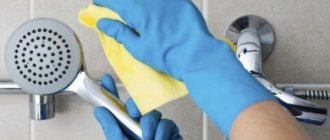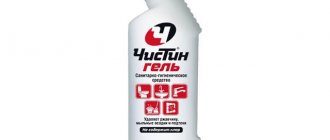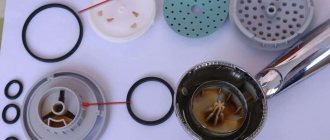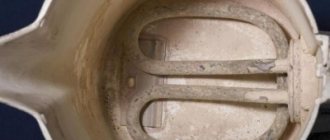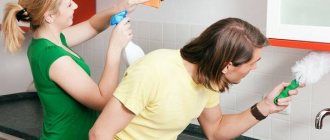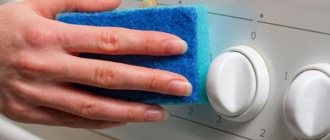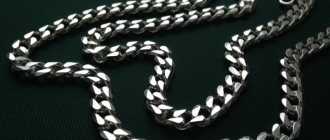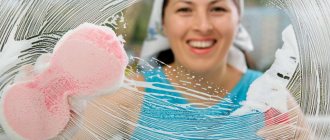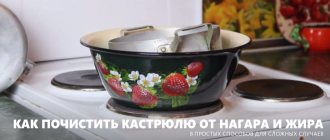With regular care of your plumbing fixtures, dirt is removed from it using conventional means, which makes cleaning the bathroom easier. However, there are many ways to easily clear limescale from your shower head, even if it is severely clogged. The main thing is to check their impact on an inconspicuous area of the structure, and use gloves and a respiratory mask while working.
Causes of pollution
The main reason for the formation of limescale lies in the increased hardness of the water.
The water contains impurities of calcium, heavy metals and other substances from which deposits are formed. High water temperature promotes the activation of plaque formation.
In addition, the rate at which lime deposits appear inside the watering can is affected by the pressure in the water supply network - the lower it is, the lower the pressure. Because of this, the compounds contained in the water are not washed off, but settle on the internal surfaces of the pipes.
Certain design features of plumbing fixtures and piping may contribute to the formation of limescale. Often the occurrence of such a problem is the result of a combination of these factors.
Useful tips
It is important to treat the entire surface, since small pockets of contamination often remain in hard-to-reach places. Even small deposits can completely ruin the result, and you will soon have to start cleaning again.
To avoid serious contamination, it is recommended to wash the watering can more often , as well as all plumbing fixtures, because small stains can be removed with conventional anti-scaling agents, but large scale deposits are much more difficult to deal with.
Chemicals pose a risk to human health, so they must be used with extreme caution. It is advisable to carry out cleaning in a well-ventilated area and use gloves and a respirator as protection.
If necessary, you can find instructions for your watering can on the Internet.
Special water filters prevent scale formation, which is an excellent preventive measure.
You can install filter meshes on the shower hose connections, as well as on the inlet of the shower head , which will eliminate the need to constantly deal with limescale.
It is advisable to test the product on an inconspicuous area, since overly aggressive components can damage the coating. Don't forget about this.
For each stain and type of watering can, you need to find your own product and method so that cleaning is easy and brings visible results.
To learn how to clean a shower head, watch the video below.
Preparation and disassembly
Disassembling the watering can will make the cleaning process easier.
Disassembling the watering can allows you to gain access to its internal elements. This will make cleaning the device easier. Not all types of watering cans are disassembled, but most of them can be temporarily dismantled.
It is better to remove not only the head, but also the hose, because... the reason for the deterioration in the passage of water may be hidden in the narrowing of its lumen due to the accumulation of lime deposits.
Before starting work, the water supply to the apartment is shut off. Then the tube is unscrewed from the mixer. To make the process easier, it is better to use an adjustable wrench.
After this, it is necessary to release the neck of the head and inspect the mesh. There is a plastic plug in the central part of the head.
It is pryed off with a knife or flat screwdriver and then removed. There is a screw underneath it. You need to carefully unscrew it with a Phillips screwdriver.
Then carefully remove the mesh and thin rubber seal. It is easy to damage, because Due to scale, this element may stick to the inside of the case. Next, the remaining parts of the head are disassembled.
After this, use a soft toothbrush to clean all hard parts, removing the upper layers of plaque.
This will ensure better results when further using improvised cleaning compounds or chemicals.
Prevention
The purpose of the event is to prevent the formation of lime-salt deposits and blockages in the nozzles:
- Installing inlet filters will allow you to capture solid mechanical impurities and rust.
- In country houses, it makes sense to install a water softener or chemical filter. Another option is a magnetic fluid transducer.
- A monthly visual inspection will help identify limescale deposits in the early stages.
(Visited 444 times, 444 visits today)
Share
Anti-plaque household chemicals
Chemicals that contain chlorine or other aggressive substances are good at removing limestone deposits.
Detergents are often used for cleaning and are used to combat stains in the toilet and bathroom.
Effective compositions include:
- "Domestos";
- "Silit Beng";
- "Toilet duckling";
- "Mr. Muscle", etc.
If the plaque is insignificant, all parts of the watering can are treated with any of these products and left for 15 minutes. Then the elements need to be cleaned with a stiff toothbrush and rinsed. If necessary, the procedure is repeated.
All parts of the watering can are treated with Domestos.
If the elements have a thick coating of water stone, it is better to soak them before cleaning them. All parts of the watering can are placed in a basin with 5 liters of hot water and 1 glass of the selected product is added. It is advisable to cover the container with a lid or towel. The parts are soaked in the solution for 12 hours. They are then cleaned and washed. This method allows you to remove water stone from the inside of the hose.
The most popular store-bought cleaners
Choosing effective cleaning products for your shower stall is not an easy task. Your eyes just run wild when you have to choose one thing. But, nevertheless, there are time-tested products that have proven themselves on the positive side, such as:
- Dishwashing detergents - effectively remove traces of soap scum. In addition to liquid formulations, in some cases “Komet”, “Pemolux” and other powders are acceptable.
- So-called fungicides - to remove black plaque and mold.
- To treat toilets - they can help clean, for example, the Toilet Duck stone tray can be a lifesaver for those who have very hard water.
- To combat scale in teapots. Antiscale solution will help get rid of limescale.
- Cleaning products for mirrors and glass. It doesn’t matter what it will be - “Mr. Muscle” or some other composition.
- Melamine sponge. This is an almost universal product that can effectively remove dirt.
Popular detergents that can be used to clean the hydrobox:
- "Akrilan" is a special product designed for cleaning acrylic surfaces.
- Cilit is a powerful product that should not be used on natural stone or aluminum surfaces. Quite poisonous. Requires extreme caution in handling.
- Tilex is a prophylactic agent. Used after taking a shower to prevent the formation of plaque and mold.
- Cif is a well-proven remedy. Can clean acrylic surfaces.
- “Sanelit” has a pungent odor, but at the same time copes well with the assigned tasks. Suitable for cleaning acrylic.
- Aron – effectively cleans hydrobox glass.
- Sarma, Domestos, OC Plus.
Home Remedies for Cleaning Shower Heads
To remove plaque from the shower head and the entire shower stall, you can effectively use some available means. Traditional recipes allow you to wash away even old deposits.
Lemon acid
At home, you can quickly remove plaque from a watering can using citric acid. All elements should be placed in a wide container and then filled with solution. To make it, add 100 g of the substance to 2 liters of hot water. The parts are soaked for 1-6 hours depending on the degree of contamination. They are then cleaned with a stiff brush and rinsed in clean water.
Coca Cola
Coca-Cola will also work for cleaning a shower head. To restore pristine cleanliness, you just need to dip it whole or disassembled into parts in a warm drink for 30-60 minutes, and then rinse with water. If the blockages are very noticeable, you can slightly warm up the cola. This way it will quickly corrode plaque and stone.
Important! Soda is very aggressive, for this reason it is not recommended to keep a watering can in it for more than an hour.
The list of cleansing properties of the drink is extensive: from tea stains in a thermos to rust from a cast iron frying pan.
Cleaning a watering can that is mounted at a height
Cleaning agent is poured into the bag.
A rain shower is often equipped with a permanent shower head mounted on a rigid stand. To clean the injectors, which can also become clogged with water stone, you will need a strong bag and a tourniquet.
Pour 1-2 cups of detergent into the bag. Household chemicals can be replaced with a concentrated solution of citric acid or ammonia, or a mixture of soda and vinegar.
The bag, which is wrapped around the neck, is secured with a tourniquet. In this case, the watering can should be immersed in the composition as much as possible.
Depending on the degree of contamination, the bag should be left in this position for 2-5 hours.
Then it is removed and water is run in to eliminate the remnants of the active substance remaining inside the watering can.
Using Melamine Sponge
You can increasingly hear that many people use a melamine sponge to effectively clean their shower stall. It looks like white foam rubber impregnated with foamed resin, which in turn quite effectively draws dirt from the surface.
A melamine sponge easily removes plaque from both the walls of the shower stall and plumbing fixtures and trays. It is also very effective in fighting:
- With greasy stains
- Soapy stains
- Rust
In order to quickly clean the shower stall, you need to slightly wet the edges of the sponge and use it to treat areas where plaque, dirt or rust has accumulated. After the areas have been thoroughly cleaned, they must be rinsed with water and wiped with a cloth.
Cleaning of non-demountable structures
Most non-removable structures can be unscrewed from the supply hose.
Such a watering can should be placed in a solution of oxalic acid or table vinegar for 3 hours.
After this, all accessible surfaces are cleaned with a brush. The nozzles should be pierced with a toothpick or a thin needle. Then the watering can is rinsed and installed in place. If the part cannot be unscrewed from the hose, it is placed in a container filled with the selected cleaning composition for 3-6 hours. Next, the contaminants are removed from the surface and the watering can is washed.
You can clean the injectors with a thin needle.
How to clean a shower if the head is not removable
If the watering can or its holder is attached to the wall, you can soak a rag in vinegar, wrap it around the dirty part and leave it there for several hours. After removal, use a stiff brush to wipe off the soaked residue.
For such situations, there is another way: pour vinegar (9%) into a bag, place a watering can in it, secure it and hold it for several hours. After removal, treat with a brush and rinse with water.
It is worth remembering about prevention. After each use, you need to wipe the watering can dry or install water filters.
Methods for cleaning a shower head from limescale, expert advice
Today there is hardly a person who does not have a shower in his apartment or house. One of the main elements of the shower set is the water sprayer. When constantly interacting with hard water, structural parts become clogged with mineral deposits. That is why it is important to know how to clean a shower head from limescale, so that you do not feel inconvenience and discomfort while taking water procedures.
Disassembling the shower head
Among the large assortment of models, watering cans made of metallized plastic and stainless steel are in great demand due to their affordable price and easy maintenance. Despite the fact that watering cans are wear-resistant and durable, the lime and limestone contained in the water contribute to their contamination. The question arises, how to clean the shower head to restore the uniformity of water flow. First you need to disassemble it, for this you will need:
- regular or Phillips screwdriver;
- three-pin key;
- pliers and a pointed knitting needle;
- soft cloth and brush.
The work process begins with disconnecting the shower head from the hose and removing the body. In modern designs, the divider is secured in the center with a self-tapping screw covered with a decorative plug. When unscrewing the shower head counterclockwise, you must be careful not to break the parts of the device. Considering the degree of contamination, do not damage the spray plate.
One of the main elements of a shower head is the divider. The functionality of the shower and its service life generally depend on the material from which it is made. Manufacturers, taking into account the purpose and frequent use of the nozzle, make it from high-quality plastic and stainless steel equipped with different types of nozzles.
Shower head elements
Despite all the advantages of the product, when used for a long time, low-quality water leads to the formation of plaque. Cheap plastic watering cans are more susceptible, where the threads and plates with nozzles quickly become covered with limescale. Unlike synthetic polymers, products made from stainless steel and copper are least susceptible to precipitation.
To get rid of lime, manufacturers of modern inexpensive nozzles use specially designed plates with soft rubber nozzles. Short tubes, activated even with a slight pressure, with the help of vibration, push out the particles of the formed sediment, preventing them from firmly attaching.
There is a mounting bolt in the middle
Shower head gasket
Limescale
Methods for cleaning shower devices from lime deposits
Despite the functional properties of modern watering cans and their equipment with different types of plates, it is recommended to periodically clean the body and parts from dirt. How to clean a shower head using ordinary improvised means, without resorting to the services of professionals, is of interest to many users. Among the many cleaning methods, the most effective are:
- soaking in vinegar (immerse all parts of the nozzle in a 10 percent solution for 30 minutes, then remove lime deposits with a brush). If the watering can is poorly cleaned, you need to repeat the procedure;
- cleaning with citric acid (soak contaminated parts in a solution in the ratio of 3 packets of acid, 15 grams per liter of water, then rinse well with water);
- removing plaque with baby oil (using a soft cloth, wipe the watering can body, spray plate, threads well with oil and leave for 1 hour, then remove with soapy water);
- cleaning the nozzle with oxalic acid (immerse the nozzle for 20 minutes in a solution prepared in the proportion of 2 tablespoons of powder per liter of water, then clean it with a brush, wash under running water). Observing safety precautions, it is used for old deposits.
When removing contamination, you need to make sure how well the watering can nozzles and body are cleaned.
It is not necessary to dismantle the structure; you can fill the bag with vinegar and secure it to the shower head overnight
A watering can can be soaked in citric acid.
Final cleaning can be done with a toothbrush.
Cleaning the hose
You can clean the hose in several ways, in particular, it depends on which hose the blockage has formed in - in a washing machine, dishwasher, in a chrome-plated shower, in the kitchen under the sink, in a garden hose, a vacuum cleaner or even a hookah.
You need to start by unscrewing the filter and the further development of events depends on its cleanliness or contamination. If the filter is still clean, but the machine still does not work, it means there is a blockage in the drain pipe. You can clean the hose by disconnecting it from the equipment (not suitable for all units) or without disconnecting it.
First, we’ll tell you how to remove a blockage in the drain pipe of a washing machine. You can clean the hose of hair, lint, and small fibers without disconnecting it from the equipment. Go to the hardware store for special products that will dissolve all the debris accumulated in the hose. Share your problem with the seller, and he will help you choose a powder, tablets or solution.
Of course, you can avoid spending money on expensive drugs and resort to traditional methods. One of the most accessible and simple methods is to use baking soda. 200 grams of powder is enough for one application.
- Pour soda into the empty drum of the washing machine.
- Select the “Wash” mode.
- Temperature - 90 degrees.
The alkaline solution, formed as a result of heating water at high temperatures, can easily deal with blockages inside and outside the hose.
There is another way - to disconnect the hose from the drainage system and clean it as is. Of course, there are many models of washing machines, however, there are no fundamental differences in their dismantling: on the back wall of the unit there is a hole to which a hose is connected, sometimes through a special adapter. You need to remove the hose following the following sequence.
- Remove the wall of the washing machine where the hole for the hose is located. Sometimes you need to dismantle not only the cover, but also half of the entire equipment. It all depends on the model.
- The hose is attached to the pump with a clamp that needs to be loosened.
- A loose clamp will allow you to disconnect the hose from the pump.
Precautionary measures
In no case should you try to disassemble non-separable models of watering cans. In the future, such a product simply cannot be glued together.
- In no case should you boil watering cans in a vinegar solution - many coatings cannot withstand critical temperatures and the aggressive effects of acids. As a result, you can not only remove limescale deposits on the mixer, but also partially or completely damage the surface of the watering can and its individual elements.
- You need to disassemble the watering can carefully so as not to lose (drop it into the drain) the mounting bolts, rubber gaskets, and other small parts.
- Removing limescale from a faucet involves using rubber gloves to protect your skin from chemical burns. It is also necessary to prevent the risk of vinegar or soda getting into the respiratory organs and eyes.
Regularity of care
To keep this plumbing fixture clean, it is not enough to know how to clean the shower head from plaque; you should regularly carry out cleaning procedures. Such procedures should be carried out at least once every 3 months, it is better if the frequency is reduced to 1 time in 30 days. Regular maintenance allows you to maintain the proper appearance of the product and extend its service life. It is recommended to install special filters on water pipes that reduce water hardness. This will reduce the number of cleanings and avoid equipment breakdowns.
